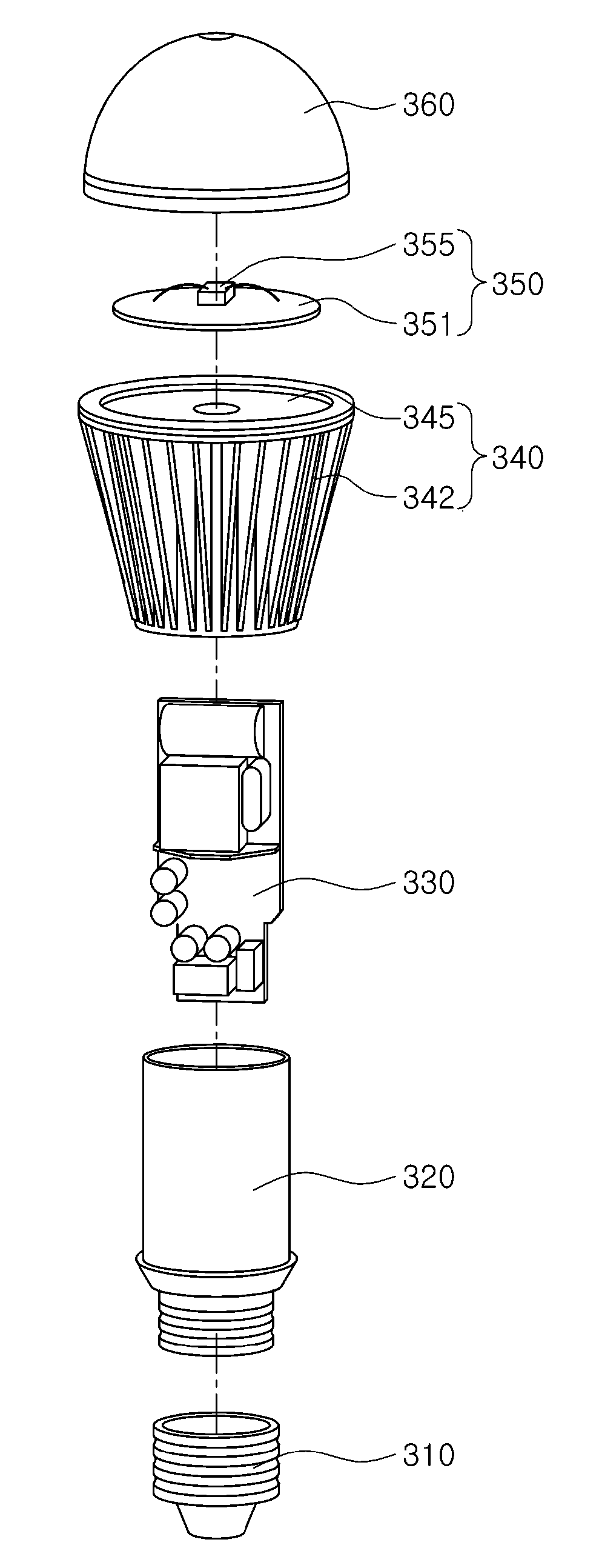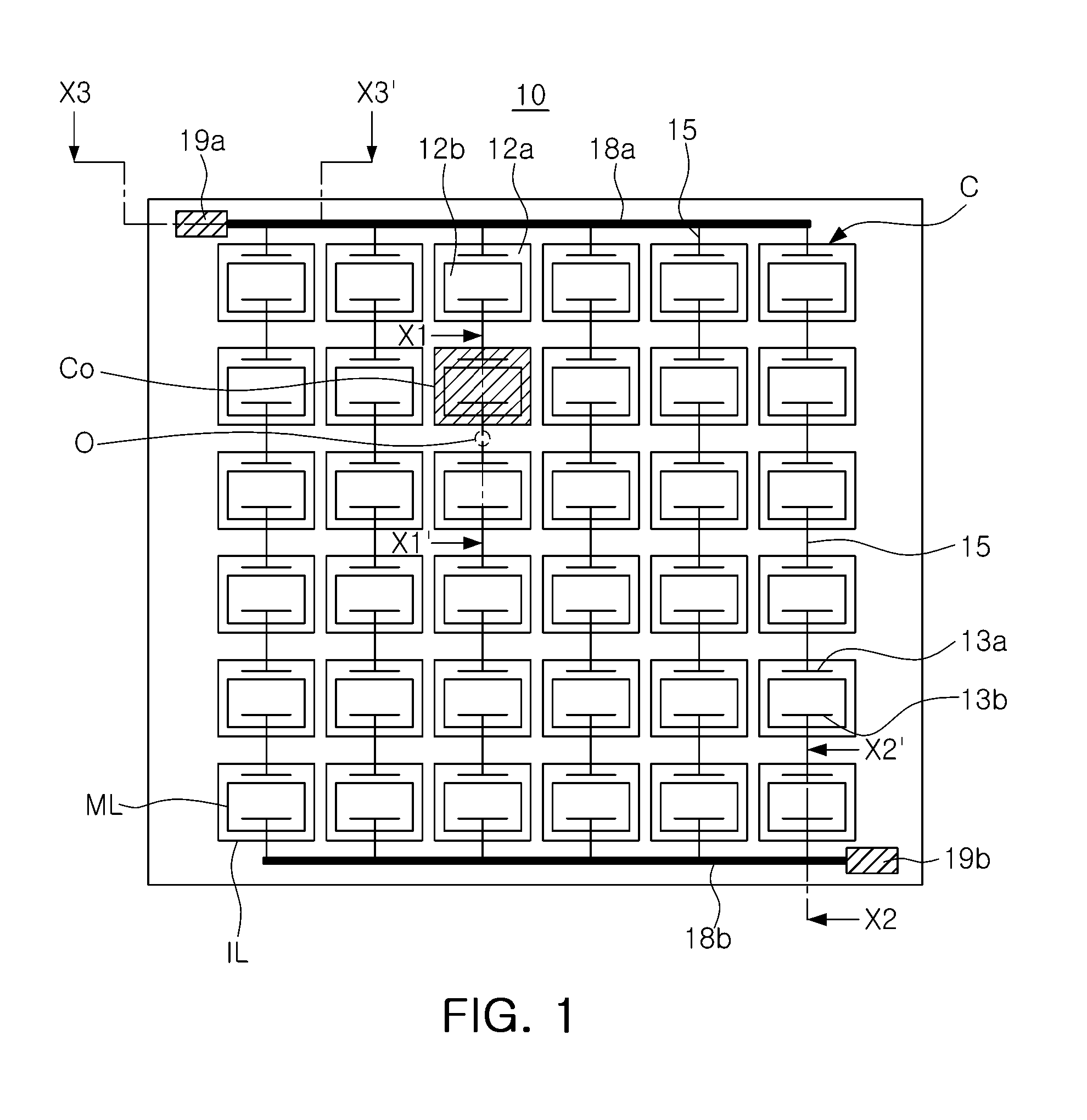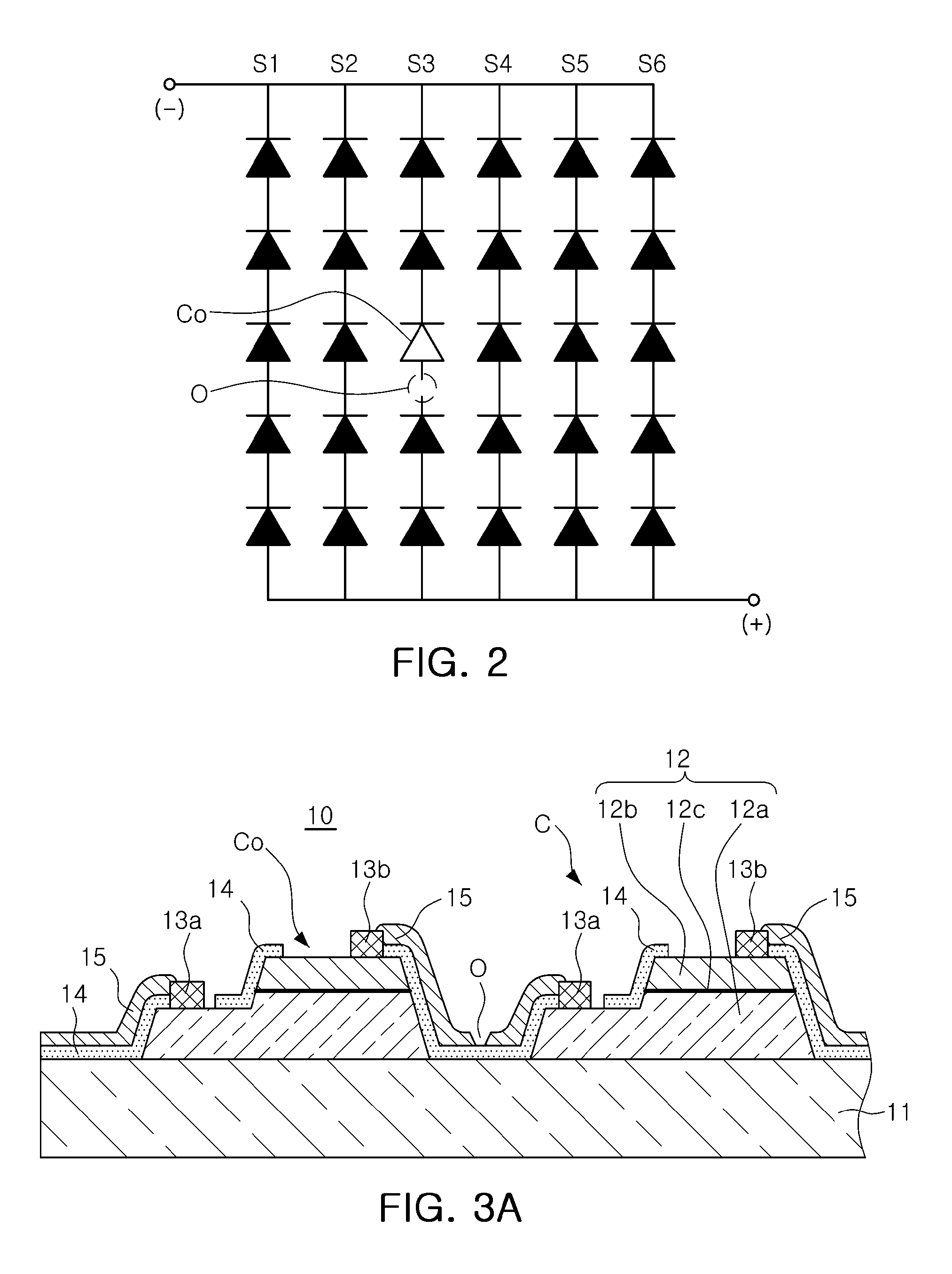Semiconductor light emitting device having multi-cell array, light emitting module, and illumination apparatus
a light-emitting device and semiconductor technology, applied in the direction of semiconductor devices, basic electric elements, electrical equipment, etc., can solve the problems of high-power leds using high-rated currents that have low light efficiency, accelerate light efficiency degradation, and reduce the efficiency of light-emitting cells. , to achieve the effect of improving the light efficiency of the defective light-emitting cell, improving the current density per unit area, and improving the light efficiency
- Summary
- Abstract
- Description
- Claims
- Application Information
AI Technical Summary
Benefits of technology
Problems solved by technology
Method used
Image
Examples
first embodiment
[0107]FIGS. 7 through 11 illustrate various embodiments using an intermediate connection part, as a scheme for satisfying the above requirements in the series-parallel connection structure like the
[0108]Referring to FIG. 7, a multi-cell array semiconductor light emitting device 70 according to this embodiment includes a substrate 71, and a plurality of light emitting cells C arrayed in a 6×4 pattern on the top surface of the substrate 71. Like the aforesaid embodiment, the light emitting cells C may be obtained by dividing a semiconductor multilayer structure having a first-conductivity-type semiconductor layer, an active layer, and a second-conductivity-type semiconductor layer that are sequentially formed on the top surface of the substrate 71.
[0109]In this embodiment, an isolation process is performed to entirely remove the semiconductor multilayer structure (a complete isolation process) to expose the surface of the substrate 71. Also, the first-conductivity-type semiconductor l...
third embodiment
[0140]FIG. 13 is a top plan view illustrating a multi-cell array semiconductor light emitting device according to the present invention. FIG. 14 is an equivalent circuit diagram of a multi-cell array implemented in the multi-cell array semiconductor light emitting device illustrated in FIG. 13.
[0141]Referring to FIG. 13, a multi-cell array semiconductor light emitting device 130 according to this embodiment includes a substrate 131, and a plurality of light emitting cells C arrayed in a 6×4 pattern on the top surface of the substrate 131.
[0142]Like the aforesaid embodiment, the light emitting cells C may be obtained by dividing a semiconductor multilayer structure having a first-conductivity-type semiconductor layer, an active layer, and a second-conductivity-type semiconductor layer that are sequentially formed on the top surface of the substrate 131.
[0143]In this embodiment, a complete isolation process is performed to isolate the semiconductor multilayer structure by light emitti...
PUM
 Login to View More
Login to View More Abstract
Description
Claims
Application Information
 Login to View More
Login to View More - R&D
- Intellectual Property
- Life Sciences
- Materials
- Tech Scout
- Unparalleled Data Quality
- Higher Quality Content
- 60% Fewer Hallucinations
Browse by: Latest US Patents, China's latest patents, Technical Efficacy Thesaurus, Application Domain, Technology Topic, Popular Technical Reports.
© 2025 PatSnap. All rights reserved.Legal|Privacy policy|Modern Slavery Act Transparency Statement|Sitemap|About US| Contact US: help@patsnap.com



